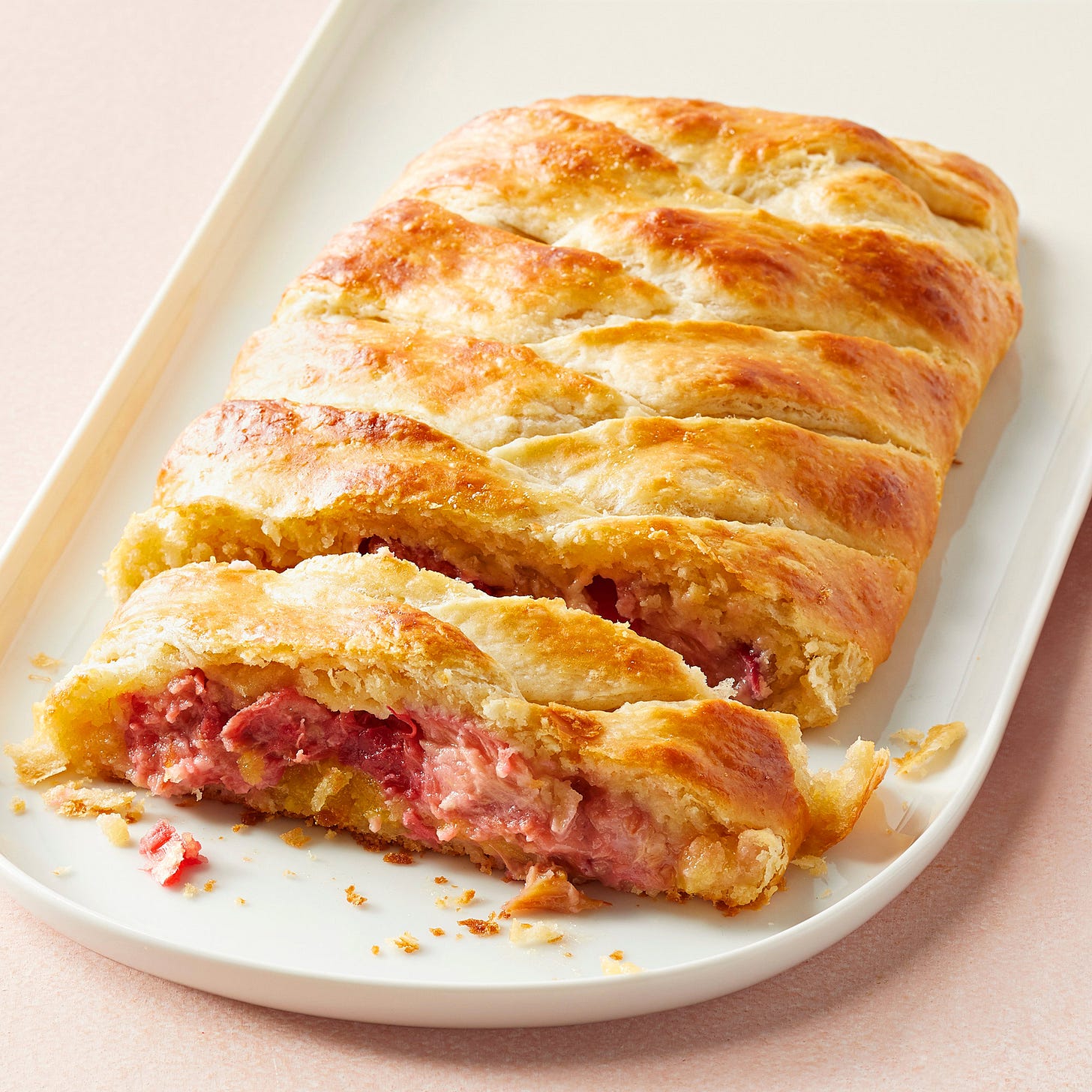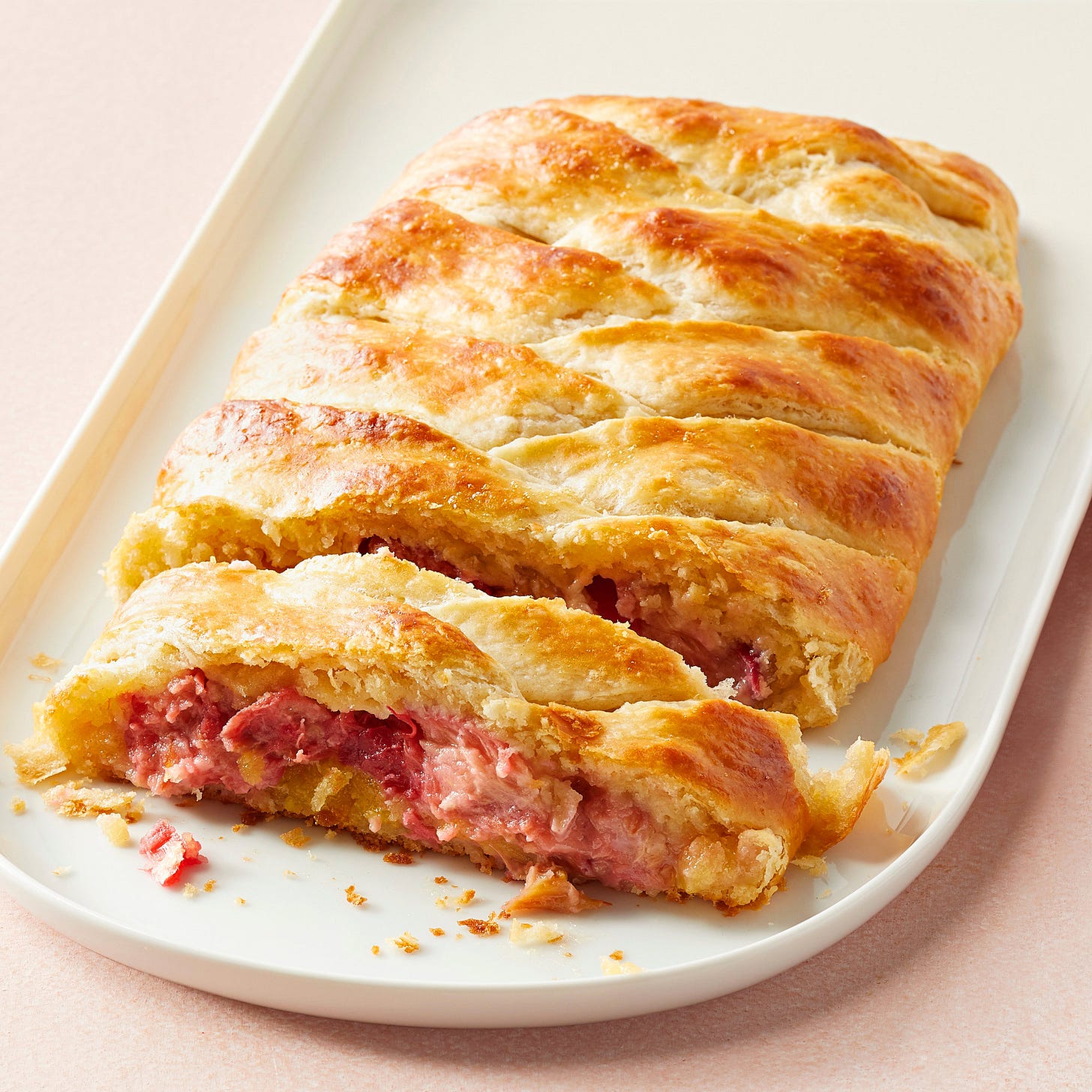Michael arrived, blinking through bright blond bangs. In one hand he gripped an enormous suitcase, in the other a tiny snapshot of his girlfriend back in Denmark. He moved into my older brother’s vacant bedroom, ours for a yearlong high school “exchange.” The phrase brought to mind “hostage swap,” and by coincidence I was stuffing my own enormous suitcase for a college year in France.
During the few days we counted as brother and sister, I offered to bake Michael something familiar. He called his mom long-distance and took down a list. Ordinary ingredients—flour, eggs, butter—destined for something extraordinary. I beat and baked, producing a loaf that was low and dense and—from the look on Michael’s face—unrecognizable.
What did I know of Danish pastry? Nothing, save those sticky sweets curled into cellophane.
Away, I wandered out of the classroom to study runny cheeses, tender breads, and delicate sweets. My favorites were constructed from puff pastry. Soft butter, I learned, is wrapped in dough, then rolled and folded, over and over. While baking, the butter lets off puffs of steam, separating dozens, even hundreds, of flaky layers.
This alchemy leavens the Hungarian strudel, the French croissant, and the Danish Danish (originally from Austria). No wonder my first effort fell flat. I practiced the roll-and-fold over and over, working my own exchange: ignorance for buttery bliss.
One week only!





That roll-and-fold, like kneading dough over and over, is as good for my soul as meditation.